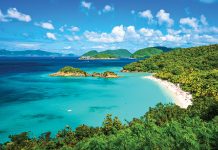
Summer may be long gone, but let’s imagine for a moment what the warm-weather seasons to come might hold in store: Lively dinners by the river, gondola rides along a canal, walks along a picturesque marina.
In Windsor, that is. Our neighbors to the south (yes, Windsor is actually south of Detroit) are busy planning an overhaul of their riverfront designed to lure visitors and keep the natives on the home side of the strait. If all goes smoothly, in 2010 Windsor’s west end will boast a new marina, a canal system, and an “urban village” full of restaurants, shops, and homes.
“The basic philosophy is, both of our cities live next to the water but haven’t ever done what it takes to live on the water,” says Dave Cooke, the mayor-appointed chairman of the private Canal Feasibility Study Committee. “Now you guys are doing work on the waterfront, and we have lots of parks but not a lot of people who just go and hang out in them.”
The office of Windsor Mayor Eddie Francis hatched the idea for the project, which is designed to lure tourist traffic from the casino on the city’s east end to downtown Windsor’s western edge.
The plot of land to be developed is a large swath behind the Art Gallery of Windsor, much of which the city owns. Under the proposal, a transient marina would cut into the riverfront, and a canal would reach about five blocks east and then about three blocks north toward Detroit. Small boats could dock in the marina for a few hours or overnight while their passengers enjoy an evening at the casino or in the urban village.
Engineering the project wouldn’t be easy, partly because Windsor’s sewer system runs the length of Riverside Drive with several intercepts where the sewage once dumped into the river. Riverside also is about 30 feet higher than the river, so the proposed canal couldn’t run directly to the river or marina and would require a separate water system. The trick will be to design the canals with water features at each end that create a visual illusion of connecting with the marina and river.
“We know we can build it,” Cooke says. “It’s understanding what the challenges are and therefore what the costs are.” Cooke’s committee, which is overseeing engineering and business feasibility studies, plans to present a report to the mayor by year’s end. They would next seek council approval, which would be followed by at least one environmental assessment (possibly two, if the federal government gets involved due to the international waterway in play).
The mayor’s hope, Cooke says, is to start work on the project in 2009, with a significant portion under way before mayoral and council elections in 2010. The canals are likely to come first.
“If you’re sitting outside and having dinner, people like to sit next to the water,” Cooke says of the project’s main appeal. “You can see if it was all nicely landscaped, with a little boat with some music going up and down the canal, a little village square in the middle, you can see it would be a cool place to go and spend an evening.”
|
|
|









